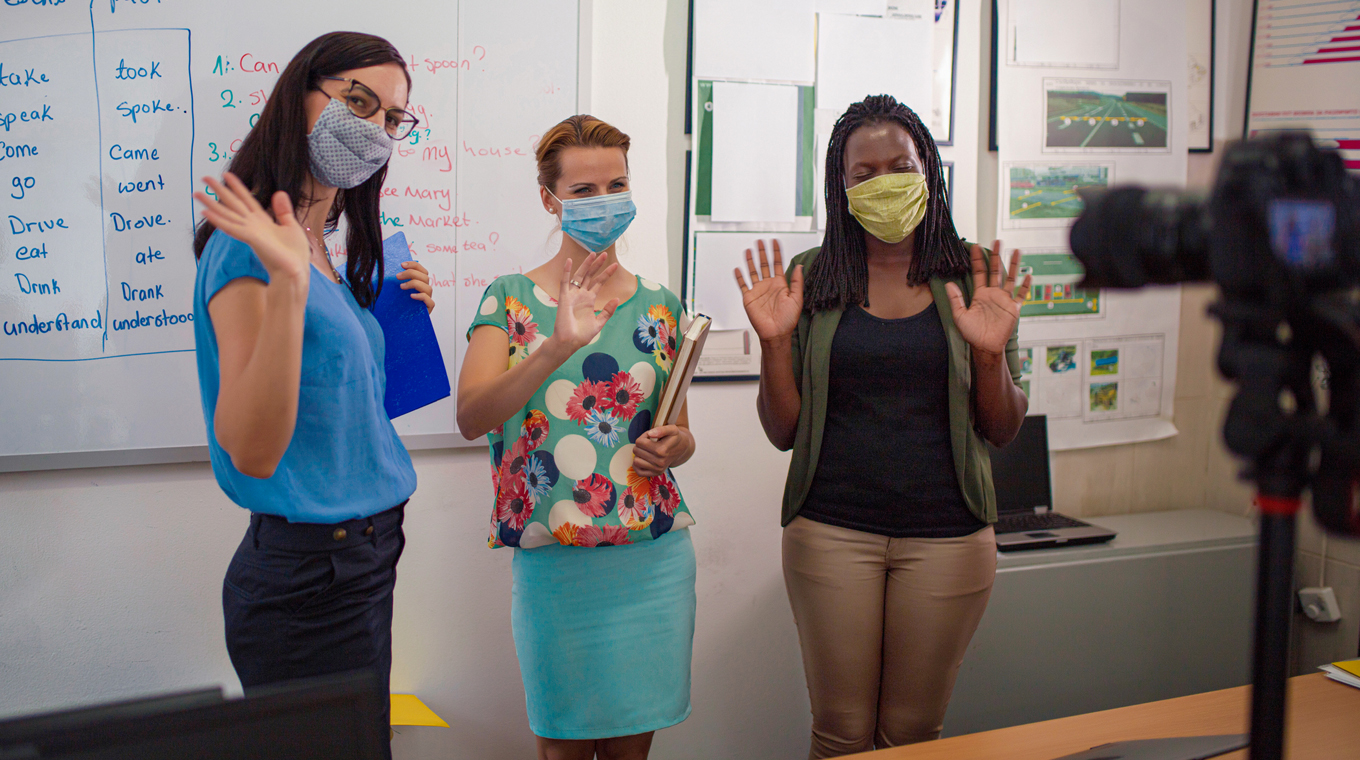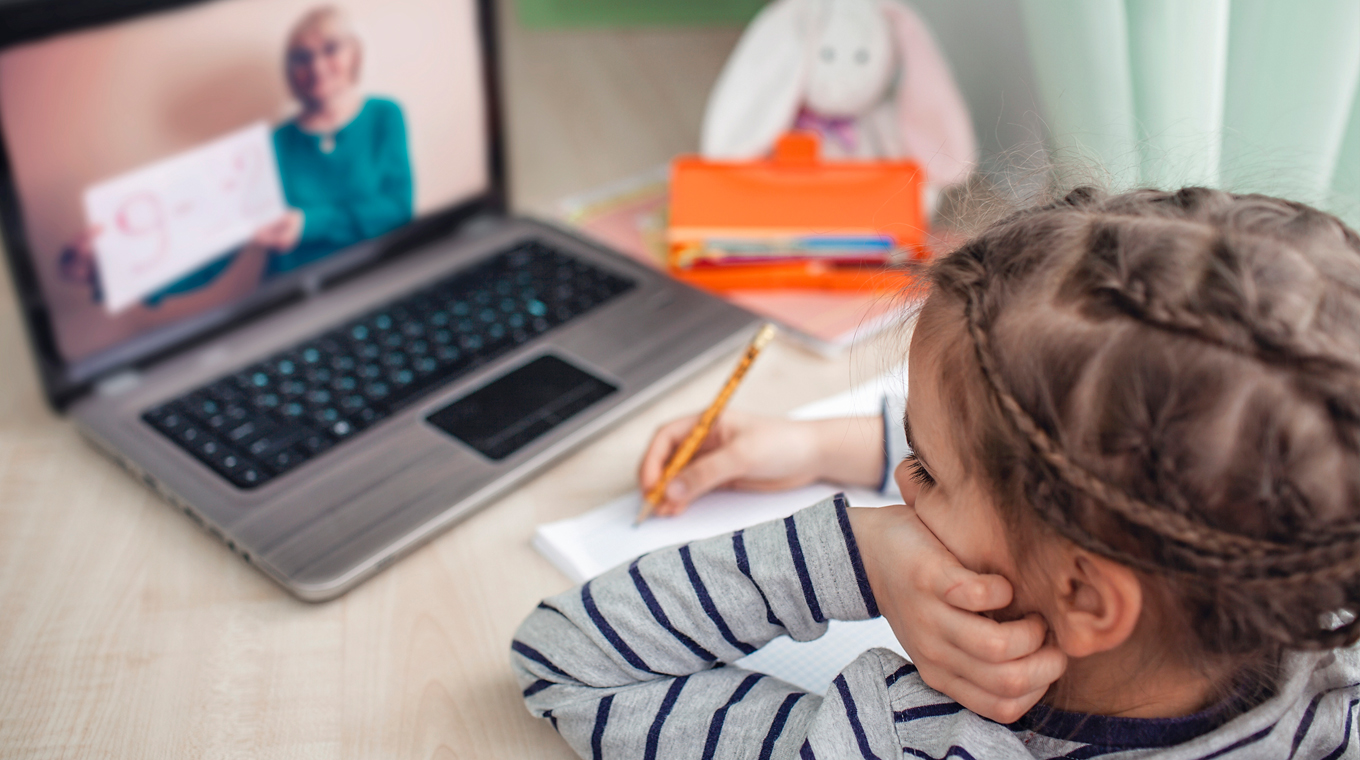
In this article
The world abruptly changed this year with the emergence COVID-19. Schools throughout the United States were thrust into a new regime of virtual learning. The virus has proven to be a tougher foe than many of us anticipated: Many of the nation’s school districts opened for Fall with a continuation of the virtual learning environments that were adopted in the spring. Students will need a lot of guidance adapting, but teachers will also need support as they navigate this new virtual learning environment.
What it's like to teach in a virtual classroom

If you have ever participated in a Zoom conference for work (or even for fun things like happy hours) you already know: It’s not the same as being there in the room with your colleagues and friends.
Dr. Linda Carling, an Associate Research Scientist at Johns Hopkins University, points out that teachers, students, and their parents all need support when using new technologies and methods — and that wasn’t universally available back in the spring, when many of these new platforms were quickly adopted.
“Regardless of the mode of delivery, many students are asked to be engaged in a way that’s new to them. Teachers might hold live or video-recorded class lectures or activities, or perhaps parents are given digital learning resources to work through with their children. Without effective supports for children from teachers and parents in place at home, families can easily become disengaged and frustrated,” she wrote.
Teaching in a classroom involves social interaction. Connecting with students involves developing relationships, making eye contact, and being able to see the signs when they are struggling with an assignment or concept.
In a virtual environment — without these physical cues — it’s hard for teachers to know in real time if students are engaged or if they have checked out entirely.
NaShonda Cooke, a special education teacher in Raleigh, North Carolina began her virtual semester in August. “I’m able to do a lot of things online. But I can’t give them that boost of confidence,” she told TIME magazine. “I can’t make eye contact when they need that, when that lightbulb moment is flickering and they need to see that safe space, even if just looking at me reminds them to have the courage to ask a question or give an answer. I can’t do that online.”
Virtual learning is a challenge for everyone involved

Dana Stangel is both a teacher and a mother of three in Los Angeles, and she has experience on both sides of the parent-teacher divide.
“We have had to micromanage,” she told Mom.com. “We have had to go into our kids’ rooms during their school days to make sure that (a) they are at their class Zoom meeting and (b) they have their cameras on.”
Dana noted that focus can be an issue for her kids. “My daughter especially loves to put makeup on or do her nails while her camera is off during a class. My sons will sneak in a video game if they can,” she laughed.
“We can't bring everyone into the same room for the school day — all the Zoom meetings have talking voices! Even with headphones, this would be a challenge. So, we stay on it and we pay attention. It's difficult, but not impossible and it gets easier each week.”
5 strategies to support teachers

The most useful thing you can do for your teachers is to prepare your kids for the work they need to do each day. This includes:
1. Keeping your child on schedule
Classes are often held up by waiting for students to log on. You can help the teacher by making sure your child is prepared. If you are able to, check-in with your kids at the beginning of each period to make sure they are logged on and ready. “I've found my own children not logged on when they should have been- sometimes just because they weren't paying attention to the time,” Dana said.
2. Doing some meal planning
No one does well on an empty stomach — it's important that your kids are fed (and hydrated) so they're alert for their teachers and have energy for the school day. Make sure the kids have breakfast and prepare their lunches ahead of time as if they were still going to their physical school.
3. Checking on your child's virtual classroom
Teachers appreciate a distraction-free environment, so when possible create a space for your child where they can concentrate. Also make sure they have the supplies they need, make sure that laptops are charged and your internet is working. Teachers need visual cues to see how individual students are processing their lessons, so confirm that your child's webcam is ON and the lighting is sufficient.
4. Communicating in a diplomatic way
Remember that this experience isn’t easy for any of us. While you absolutely should let your children’s teachers know when you see problems, inundating them with emails might not be all that useful right now.
“As hard as it is for kids and families, it's just as hard if not harder for teachers,” Dana said. “They are suddenly forced to do things in a whole new way and as you know, the technology isn't always easy. Practice patience everywhere you can.”
5. Remembering that words of thanks go a long way
A thank-you card or email can make a teacher’s day during these tough times. So do acknowledgements like flowers or gift cards, especially if the virtual learning semester bleeds into the holidays. Let your children’s teachers know their hard work is appreciated.







